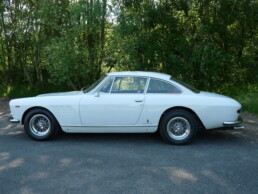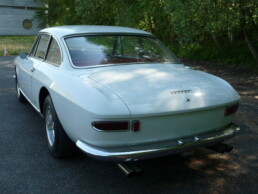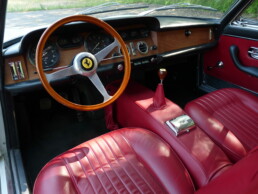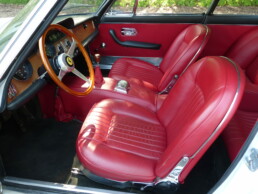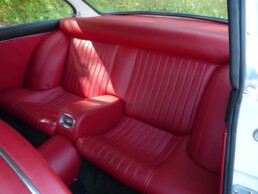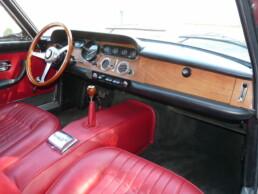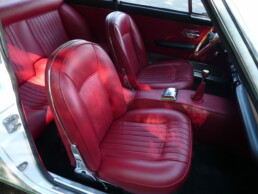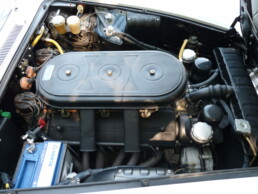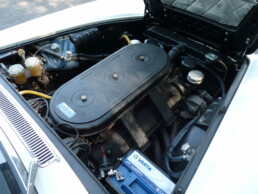The 330 America was replaced by the 330 GT 2+2, which was unveiled at the Brussels Motor Show. It was equipped with the new 4-liter V12 type 209, equipped with an engine block slightly longer than that of the 400 SA series from which it was derived.
The 330 GT 2+2, which was declined in two series, owed its elegant line to Pininfarina.
The main difference was in its snout, with the first series (1963-1965) displaying four headlights and the second (1965-1967) only two.
In total, around 1,000 copies were built.
Designed by the famous Turin coachbuilder Pininfarina, long associated with Ferrari, the bow and stern of the 330 GT 2+2 are particularly innovative, particularly with regard to the front light units with four headlights.
The Ferrari 250 GTE, produced from 1960 to 1963, was the Italian manufacturer’s first 2+2 automobile. But despite her success, she is considered too “wise” and too weak.
Ferrari then decided to develop a model to overcome these criticisms, and called it the 330 GT because its displacement went from 250 to 330.
The 330 GT 2+2 was born in a very favorable historical context: for the first time in its history, in 1964, Ferrari achieved a double at the 1,000 kilometers of the Nürburgring and also won the first three places at the 24 Hours of Le Mans. It emerges that “Ferrari’s technological and sporting domination is absolute since no brand has ever again dominated to this extent both in Sport-prototypes and in Grand Touring.”
Ferrari 330 GT 2+2
Ref636Alésage x course Year1964Motor12 cylinders in V 3,967 cc 300 hpBore x stroke77 x 71 mmGearbox4 speed manual + overdriveBrakesFront and rear discsFront suspensionIndependent, unequal length wishbones, coil springs over telescopic shock absorbers, anti-roll barRear suspensionIndependent wishbones of unequal length, coil springs over telescopic shock absorbersFuel injection3 Weber 40 DCZ/6 carburettorsPerformance245 Km/hDimensions4 840 x 1 715 x 1 360 mmWeight1 380 KgProduction data1,088 examples in total (628 examples with double headlights)
Ferrari 330 GT 2+2
This Ferrari 330 GT 2+2 is accompanied by its Ferrari certificate attesting to its technical characteristics as it left the factory and this certifies that it is in its original colors Bianco 18934 Italver, interior Pelle Rossa VM 3171.
Ref636Alésage x course Year1964Motor12 cylinders in V 3,967 cc 300 hpBore x stroke77 x 71 mmGearbox4 speed manual + overdriveBrakesFront and rear discsFront suspensionIndependent, unequal length wishbones, coil springs over telescopic shock absorbers, anti-roll barRear suspensionIndependent wishbones of unequal length, coil springs over telescopic shock absorbersFuel injection3 Weber 40 DCZ/6 carburettorsPerformance245 Km/hDimensions4 840 x 1 715 x 1 360 mmWeight1 380 KgProduction data1,088 examples in total (628 examples with double headlights)


